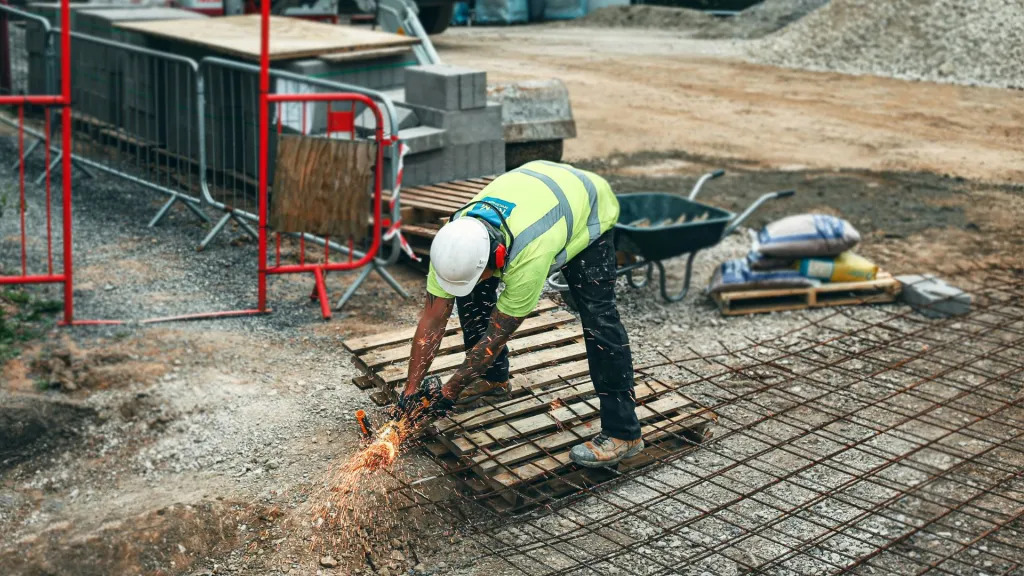Aleisha Robinson
AFRO Intern
arobinson@afro.com
Across the country Americans from all walks of life are lamenting the hot temperatures. Nearly every industry has been impacted by the heat in some way, but no group has been hit with the scorching sun rays more than construction workers, crossing guards and others who make their living outdoors.

Now, as a result of the recent heat, President Joe Biden has announced a new action plan to protect workers and communities from the extreme weather.
The president’s climate agenda aims to reduce energy costs for hardworking families, enhance America’s energy security, create good-paying jobs and strengthen community-driven climate resilience across the country.
In a press release, the White House stated, “President Biden has taken historic actions to protect workers and communities from the impacts of extreme heat, including lowering home energy costs and helping more Americans stay safe, cool and healthy in their homes. The Administration has also announced $1 billion in grants to expand equitable access to trees and green spaces in urban communities, which will reduce heat-island effects and cool cities. To better equip local officials and the public with robust and accessible information, the administration launched ‘heat.gov’ a centralized portal with real-time, interactive data and resources on extreme heat conditions, preparedness and response.”
According to the U.S. Department of Health and Human Services, in July, 594 counties across the United States are projected to experience five or more extremely hot days.
Across the country, Texas, Montana, Kansas and Oklahoma have been hit by the sweltering heat the hardest. Nationwide, a total of 62,859,224 people have been affected by these unbearable conditions.
Florida and Texas, governed by Republicans Gov. Ron Santis and Gov. Greg Abbott, respectively, enacted legislation preventing local governments from mandating heat protection for outdoor workers. Should the Biden administration’s rule be finalized, it would override state standards and require states with existing heat procedures to implement the new institute measures.
Heat-related death rates have been steadily increasing in the U.S., with as of now, 1,602 deaths in 2021; 1,722 in 2022 and 2,302 in 2023.
Amid these alarming statistics, William Davis, a council representative at Eastern Atlantic States Regional Council of Carpenters has issued a stern warning, “Heat can be an extremely dangerous thing when you’re working construction.”
“You can easily pass out on the job if you are not paying attention to what you’re doing or your body,” added Davis.
Davis emphasized the importance of awareness and precautionary measures to mitigate these risks. He expressed strong support for Biden’s recent proposal aimed at enhancing protections for outdoor workers.
“Biden’s proposal is right on target because a lot of times, people may feel exhausted and because they are scared to lose their jobs, they keep quiet,” Davis added.
Biden plans to convene state, local, tribal and territorial leaders later this summer for ‘White House Summit on Extreme Heat,’ a conference aimed at enhancing U.S. community resilience and global climate leadership efforts. Additionally, the Federal Emergency Management Agency (FEMA) is announcing $1 billion in grants to assist communities in managing natural disasters and the Environmental Protection Agency released a new report detailing the impacts of climate change.
In a press call, a senior White House administration official told reporters, “The purpose of this rule is simple. It is to significantly reduce the number of work-related deaths, injuries and illnesses suffered by workers who are exposed to excessive heat and risks while simply doing their jobs.”
Under the Occupational Safety and Health Administration rules, employers are required to identify heat hazards, develop emergency response plans related to heat illness and provide training to employees and supervisors. They should establish rest breaks, provide shade and water and heat acclimation or building of tolerance to higher temperatures for new workers.
The proposed rule sets a new penalty structure for heat-related violations. There is a maximum penalty of about $16,000 for hazards due to employer negligence.
The Biden’s administration proposed rule is a crucial step towards ensuring the safety and well-being of outdoor workers as they continue to face the increasing threat of extreme heat waves.
Lee Sanders, president of American Federation of State, County and Municipal Employees (AFSCME) expressed that climate change has led to the hottest years on record, significantly impacting workers who face rising heat-related illnesses and injuries.
He said Biden’s administration’s proposed Occupational Safety and Health Administration (OSHA) heat standards aim to update worker protections to address current environmental challenges.
“For AFSCME members— whether they’re paving roads, collecting garbage, driving students to school, directing traffic or maintaining safety in corrections facilities— these safeguards will provide much-needed relief on the job, helping them to sustain the essential services we rely on,” said Sanders.
“The new heat standards, together with the recently introduced Public Service Worker Protection Act, would keep workers safe while reflecting the realities of working in 2024. More importantly, they will save lives.”

 ">
">